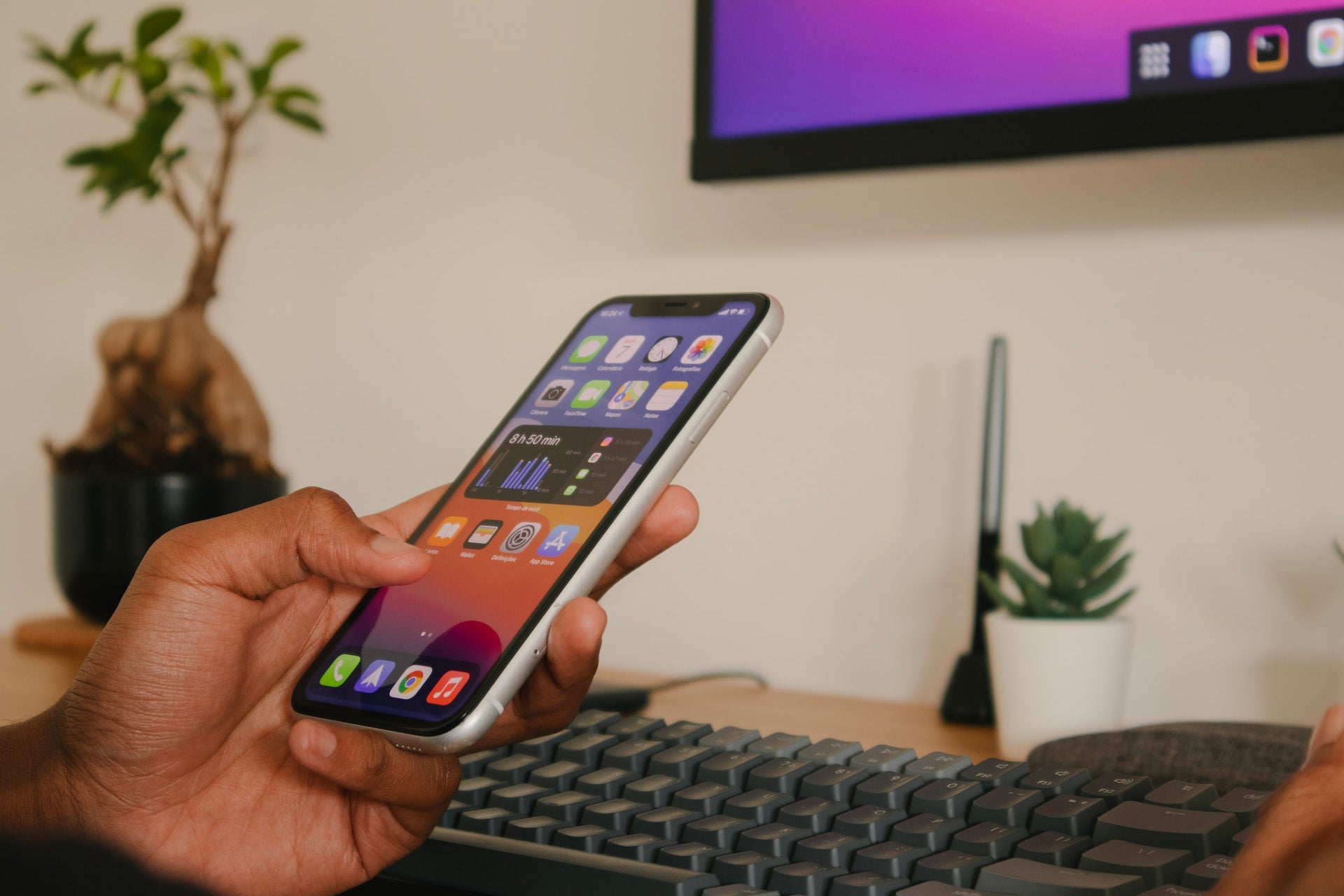From Insanity to Serenity: 4 Rules for Better Digital Hygiene

In a recent article, we outlined the serious toll that digital devices are taking on Gen Z's mental health. While these harms have been most clearly demonstrated in adolescents, experts agree that negative impacts of the online world are hardly confined to our youth.
Amid the overstimulation, distraction, and polarization of our digital age, everyone living today is faced with a few pressing questions: Is it possible to coexist in harmony with technology? Can we leverage the benefits of our digital devices without becoming addicted, distracted, and mentally scattered? Can we remain informed and connected without feeling anxious and overwhelmed? In this article, we’ll approach these questions through a tactical lens, exploring four strategies you can employ to increase the odds that your participation in the digital world will enhance, rather than diminish, the quality of your life.
Rule #1: Guard the Bookends
To avoid a life of digital clutter, bestselling author Ryan Holiday has often spoken about the importance of safeguarding one’s mornings and evenings. The bookends of our day, he suggests, have an outsized impact on our mental state, and should thus be treated as sacred, untouched by the digital frenzy which characterizes so much of our lives. As Holiday puts it, “I don’t want to be an item on somebody’s to-do list. I don’t want my email to decide how my day is going to go. I don’t want social media alerts to determine whether I’m going to be happy or sad or angry or distracted.” Instead of jolting awake to a fresh batch of emails in our inbox, or drifting to sleep under social media's dim glow, treat the first and last hours of your day as a sacred time for true, restorative rest.
You might begin your day with an analog ritual – for Holiday, it’s a sunrise walk with his sons. Maybe for you, it’s something structured like a workout, a brief meditation, or a bit of journalling and reading. Or perhaps it’s as simple as making breakfast for your kids without the anxiety of the morning news cycle swirling around in your mind. Regardless of the form it takes, doing literally anything other than checking your devices immediately upon waking is a step towards starting the day intentionally, on your own terms.
Similarly, let at least the hour or so before bed be a time to truly wind down – to relax, reflect, read, or get lost in a show. By shielding these bookends from digital interference, you're not just protecting your time; you're honoring your emotional health, ensuring that your mind enters the inevitable chaos of the rest of your life feeling fresh and clear.
If you need an extra aid to help you wind down at night, check out our Restful Sleep Formula today.
Rule #2: Schedule Distraction
Apps like Instagram, Tik Tok, and YouTube are not altogether negative, of course. When used in moderation, they are a great way to stay informed, connected, and entertained. But as with anything, the dose makes the poison. The problem is when they verge on becoming a compulsion which interferes with our work and personal lives.
Enter strategy #2: consider scheduling specific "digital indulgence" slots into your calendar. This approach is a reminder that we have the agency to choose when and how we engage with the digital world. It’s not about restriction but about intention. In practical terms, you might schedule an hour of scrolling at lunchtime, or at the end of the workday. Over time, however, you might discover that when applying this principle of intentionality, you no longer find your devices quite as enticing in the first place.
Before reading any further, it’s well worth checking your screen time (available in settings on most smartphones). In all likelihood, your average time spent on social media will be surprisingly large – say, multiple hours per day. In light of this, your first instinct might be to abstain from social media altogether. But research shows that approaches centered around abstinence are seldom sustainable. So, rather than reduce your screen time, commit to putting it into your calendar intentionally, instead of using it as a pacifier whenever you feel the itch to scroll.
Another tip: when you do feel that itch, write down exactly how you’re feeling, or what’s going on in your day. Maybe you’ve hit some sort of friction with a project at work, or you’re feeling a sense of overwhelm in your personal life. Whatever your triggers are, becoming consciously aware of them is a powerful step towards being able to resist them.
Rule #3: Embrace the Art of Single-Tasking
Many of us exist in a state of almost perpetual multitasking. We scroll Tik-Tok while watching TV. We listen to podcasts and audiobooks while commuting to work and doing the dishes. We feel anxiety at the mere thought of going for a walk or to the gym without our headphones. We are so magnetized by the potent pull of the digital world that we’ve lost the capacity to do just one thing at a time.
Herein lies the rationale behind our third piece of advice: embrace the art of single tasking. When it’s time to do the dishes, for instance, just do the dishes. Resist the urge to pull up YouTube or call your mom at the same time. It will feel uncomfortable at first, but applying this sort of willpower to basic tasks throughout your day will do wonders to preserve your ability to focus.
Of course, multitasking isn’t always bad; sometimes throwing on a podcast is a great way to make use of your commute, or time at the gym. This tactic isn’t about shunning technology. It's about preserving arguably the single most important skill we have – the ability to pay attention.
It's not only that preserving your focus will make you more effective at work, or in your personal life (though it will). It’s that on a fundamental level, there's a profound depth to experience which only emerges when we're engaged in one thing at a time, and which is inaccessible when our attention is flitting back and forth from one thing to another (as when we’re multi-tasking).
Think back to a time when you were so engrossed in your life that you lost your sense of self, time started to disappear, and you felt as though you were – as the British say – getting “stuck into” your life. You might call this type of experience “flow”, or “being in the zone.” If you’re a meditator, you might call these moments “mindful.” Whatever your perspective, I’d be willing to bet they weren’t generated by anxiously scrolling Instagram while half-watching Netflix, or mindlessly browsing Facebook Marketplace while pretending to listen to your Spouse talk about their day.
I’d be willing to bet that those fully immersive moments occurred while engaging in one thing with a single-minded focus. Maybe you were rock-climbing or playing an instrument (these are among the most classic of flow-inducing activities). Or maybe you were engrossed in a deep conversation with a friend or sharing a sunset with a loved one. Experiences of flow can take many forms, but they all appear to produce a common result: a sense of deep meaning and fulfillment. In fact, when Psychologists have asked people to rate the quality of their lives, the frequency of flow is among the most reliable predictors of their ratings.
While it might seem trivial to intentionally ditch your phone while doing the dishes, or to go for a walk without your headphones, doing so might grant you access to a richer layer of experience, one which only the unfiltered presence that comes from doing one thing at a time can unveil.
Rule #4: Rediscover the Analog World
Any genuine attempt to improve one’s digital hygiene should entail more than simply renouncing technology. It should also involve an effort to rediscover the analog world. As we’ve discussed in previous articles, habit change is often more sustainable when it involves adding a positive behavior than when it involves removing a negative one. So, rather than simply committing to spending less time online, commit to spending more time doing something in the physical world. Maybe it’s restoring an old car, bike or piece of furniture. Maybe it’s taking up a new sport or a martial art. Maybe it’s getting into painting, or photography, or some other hobby.
Prioritizing analog habits will make it much easier to implement the other strategies we’ve discussed thus far. Rather than having to white knuckle your way through, enduring the pain of purposeful abstinence, fill your time with high-quality, real-world activities. This will diminish technology’s powerful pull on your attention and allow you to effortlessly stay within your digital hygiene guardrails.
The Bottom Line
Many of the most addictive social media platforms operate on a simple but pernicious principle: the most valuable digital currency is our attention. As the author Johann Hari puts it, we're living in an age of "junk values," where “what’s enraging is engaging,” and platforms profit by selling our attention to the highest bidder. But here's the liberating truth: we can simply choose not to participate. By carefully curating our digital diet and maintaining sovereignty over our time and attention, we can stay informed and connected without becoming overwhelmed and addicted.
Navigating the digital age with grace isn't about becoming a Luddite, or completely renouncing technology. It's about seeing it for what it is: a powerful tool that – if treated with care – can massively enhance our lives. If you can implement even one of the strategies we explored today, you’ll be making a profound statement about the kind of life you wish to lead – one of agency, depth, and presence.














